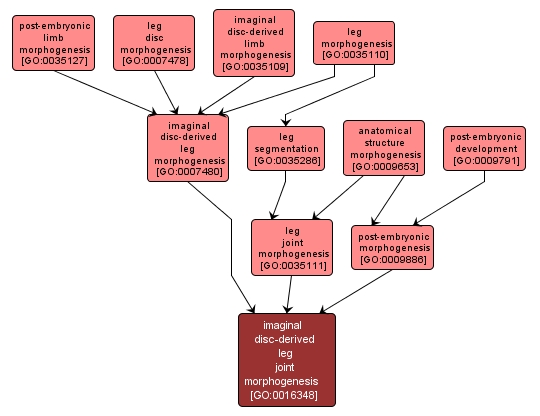| Desc: |
The process by which the anatomical structures of an imaginal disc-derived leg joint are generated and organized. Morphogenesis pertains to the creation of form. The leg joint is a flexible region that separates the rigid sections of a leg to allow movement in a controlled manner. An example of this is found in Drosophila melanogaster. |














